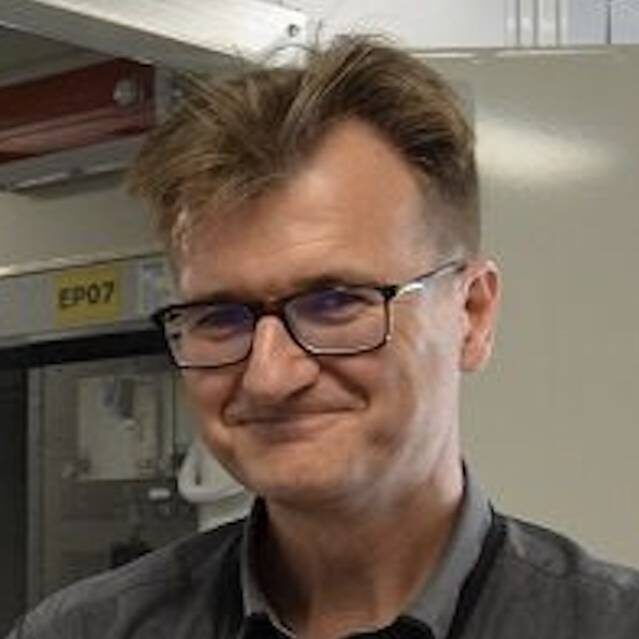About cookies on this site Our websites require some cookies to function properly (required). In addition, other cookies may be used with your consent to analyze site usage, improve the user experience and for advertising. For more information, please review your options. By visiting our website, you agree to our processing of information as described in IBM’sprivacy statement. To provide a smooth navigation, your cookie preferences will be shared across the IBM web domains listed here.
Research
Frontier Fusion: Accelerating the Path to Net Zero with Next Generation Innovation
12 December, 2024 | Written by: Juan Bernabe Moreno, Rob Akers, and Vassil Alexandrov
Categorized: Artificial Intelligence | Research | Sustainability
Share this post:
Delivering the world’s first fusion powerplants has long been referred to as a grand challenge – requiring international collaboration across a broad range of technical disciplines at the forefront of science and engineering. To recreate a star here on Earth requires a complex piece of engineering called a “tokamak” essentially, a “magnetic bottle”. Our approach to date for designing these complex machines has been one of “test-based design” – i.e. an iterative approach of “learning by doing”. Unfortunately, measured against the demanding timeline for decarbonising and transitioning economies into the Net Zero era, test-based design for fusion has now become too slow and too expensive. It is essential therefore that the fusion sector adopts the latest digital technologies to accelerate and de-risk the delivery of commercial fusion power – for operations and for plant design. In short, we must move the dial which represents how we design complex strongly coupled fusion systems away from test-based design and towards the digital world of simulation and “data centric” engineering.
To make fusion power a reality by the 2040’s, it is essential that fusion science (especially materials science and plasma physics) and fusion engineering itself become supercharged by recent disruptive technologies such as Artificial Intelligence and exascale supercomputing. Domain scientists and technologists across academia and industry must work in harmony to exploit the latest machine learning methods, large-scale parallel computation, and high-fidelity simulation methods. The partnership is committed to adhering to ethical AI standards and ensuring data privacy and security in all applications.
To this end, three partners have joined forces to create a step change in the UK’s ability to design fusion plant “in-silico”. UK Atomic Energy Authority, as a leader in fusion science and technology will provide programme requirements, domain expertise and data. IBM as a technology pioneer Artificial Intelligence and Quantum technologies together and the Science and Technology Facilities Council’s (STFC) Hartree Centre, with its heritage in democratising HPC, Extreme Scale AI and other digital solutions into Industry and the public sector will deliver digital expertise unique to the partnership. Together, the team plans to explore ways to enhance the powerplant design process and contribute to a roadmap for commercial fusion power.
UKAEA curates a large volume of fusion plasma/plant experiment data (from decades of having operated machines such as JET and MAST) across various modalities (e.g., time series and high-speed camera data, text corpora containing inferences made upon that data etc.). Due to the challenges of multi-modality, volume, dimensionality and complexity, these data contain a mountain of untapped information. In addition, fusion experiments and facilities are constantly evolving but are largely driven by human intuition and our limited ability to draw inferences from that data. Scientists therefore need a way to use data from past experiments much more effectively to inform future experiments, the construction of future facilities and the design of powerplant systems themselves – i.e. a “Design of Experiments” approach to decision making – to improve efficiency, time to solution, and to ensure that decisions are based upon “all” existing data, information and knowledge – thereby streamlining and reducing the need for test-based design. Where AI technologies are likely to prove transformative is in our ability to address” the sheer complexity of fusion powerplant design.
Over the last five years, UKAEA and the Hartree Centre have grown a network of international collaborations designed to accelerate and derisk the fusion roadmap. As a national computing centre, the Hartree Centre focuses upon the industrial application of exascale and high-performance computing through focused collaborations with US Exascale Computing Project partners across the US National Labs. Combined with a long-term collaboration with IBM, and most recently the Hartree National Centre for Digital Innovation, this tri-party collaboration is therefore expected to facilitate collaborative research and explore potential industrial applications of high societal impact for addressing the UK’s fusion missions but also other, synergistic engineering applications particularly across the Net Zero energy sector.
More specifically the new collaboration will combine expertise in Artificial Intelligence from IBM and STFC with UKAEA’s data and modelling capabilities to create foundation models that can learn the underpinning dynamics of the experimental fusion data. This will enable the generation of new information and new capabilities that will feed into various applications, including training downstream models for simulation and/or prediction. Using these techniques, the models will “learn” from past experiments, ideally “incrementally” whereby they will ingest live experimental data. The team intends to create explainable and inspectable models, especially in cases where unknown and unvalidated physics is being explored. It is expected that the unique combination of fusion scientists and AI experts across these three organisations will deliver transformative breakthroughs in the application of AI technology to fusion powerplant design and experiment/facility operations, supporting a growing fusion sector in the UK around an urgent need to “re-engineer” fusion design for the AI, exascale, and fusion delivery era.
“I am especially excited to see our team exploring together with the UKAEA and the Hartree Centre experts how we can use generative AI technologies to approach one of the most challenging problems of our time. It is certainly a testament to the kind of research we are driving in the UK for the greater good.”
Juan Bernabe-Moreno, Director IBM Research Europe, UK and Ireland.
“I am delighted that we are joining forces with IBM and STFC Hartree Centre to work on our ambitious programme aiming to deliver commercial fusion in the 2040’s by exploiting the transformative power of Artificial Intelligence. IBM’s expertise in complex systems engineering and supercomputing and the Hartree Centre’s expertise in democratising HPC and AI into the engineering sector, combined with UKAEA’s leading R&D in fusion energy will be a powerful force for progress in this hugely important field.”
Rob Akers, Director of Computing Programmes, UKAEA.
“I am really very pleased that, thanks to our well-established collaborations with both IBM and UKAEA, we can now come together to address a key grand challenge and advance state-of-the-art in modelling and simulation of fusion powerplants, thereby supporting the UK’s ambition to become a global leader in clean energy innovation.”
Vassil Alexandrov, Chief Science Officer, STFC Hartree Centre.
Check out IBM’s Research and Development division here.

Juan Bernabe Moreno
Director, IBM Research Europe.

Rob Akers
Director of Computing Programmes, UKAEA.

Vassil Alexandrov
Chief Scientific Officer, STFC Hartree Centre.
More Research stories
By Nick Levy on 25 November, 2024
Unlocking the Future of Financial Services with IBM Consulting at Think London 2024
In a world where financial services are evolving at an unprecedented pace, staying ahead of the curve is crucial. The recent IBM Think London event, IBM’s flagship UK event, brought together industry leaders, partners, and clients to explore how cutting-edge technologies like generative AI and hybrid cloud infrastructure are transforming the sector. For IBM […]
By Eileen O'Mahony on 12 November, 2024
Converting website traffic into happy customers with a smart virtual assistant
With a long track record of guiding companies across various sectors through digital transformation, IBM Business Partner WM Promus is now focusing AI innovation. Eileen O’Mahony, General Manager at WM Promus, explains how her company helped a UK-based commercial finance brokerage enhance customer experience, and develop new sales leads using IBM watsonx and IBM […]
By Dr. Nicole Mather on 5 November, 2024
Reducing the time taken to write regulatory submissions – Introducing our Accelerator
The Case for Generative AI in Regulatory Acceleration Generative AI and automation are now enabling digital transformation across biopharma, allowing radical reshaping and automation of core processes – and focusing human effort where it is required. Companies embracing this approach across the whole organisation are deriving significant competitive advantage and transforming the way work is […]





























